5 Challenges Installers May Face with Bamboo Flooring
These are the challenges installers may face. Each one will be discussed in more detail in the article.
1. Quality Issues
2. Moisture Precautions
3. Mold Problems
4. Installation
5. Health Concerns
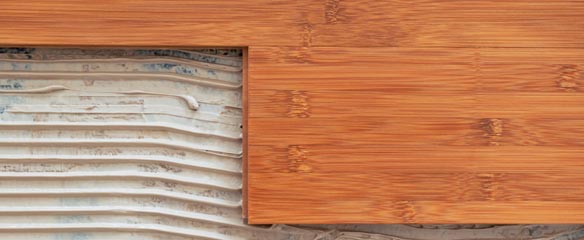 Bamboo flooring has become quite popular among home and business owners in recent years, for a number of good reasons.
Bamboo flooring has become quite popular among home and business owners in recent years, for a number of good reasons.
It holds a beautiful finish, adds a certain elegance and natural feel to any room, and costs up to 50% less per square foot than hardwood. It’s also championed as an eco-friendly alternative to wood.
Yet, as good as bamboo flooring sounds, it poses several challenges–and risks–for professional wood floor installers.
Quality Issues
Not all bamboo flooring sold today is high-quality. There are roughly 1,600 species of bamboo, but only a few are actually good for flooring.
Much of the unsuitable bamboo brought into this country comes from China, where there are no governing regulations to control product quality. To generate profits faster, many Chinese companies harvest bamboo before it fully matures and attains its full strength potential. This causes quality to vary widely from company to company.
As a result of inferior bamboo being harvested too soon and glued with toxic adhesives, the bamboo is easily dented from shoes, furniture, kids, pets, and dropped objects. Once the floor is indented, the finish becomes highly prone to flaking and peeling. This can lead to costly callbacks for installers. In fact, many customers have complained that their floors were scratched or dented the same day of installation.
Currently, there are no useful quality or grading standards for bamboo flooring. The National Wood Flooring Association (NWFA) has been asked to develop standards, but that task may be nearly impossible because many of the concerns are beyond the NWFA’s control. For instance, there are many initial steps in the Chinese harvesting and manufacturing processes that are prone to human error and corner-cutting–steps the NWFA cannot control. The only way to establish effective standards for bamboo is to monitor the whole process from beginning to end.
Moisture Precautions
Drying bamboo at the factory is difficult because it’s hard to measure the moisture content. Most Chinese factories don’t dry the bamboo down to a target moisture content as we do here with wood. Instead, they depend on a fixed schedule.
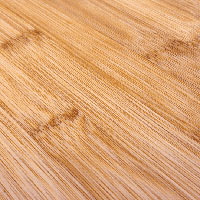 Even when bamboo is carefully dried, consistent moisture content appears to be a problem for all strand bamboo manufacturers. It can cause the bamboo to expand along its length and width. With strand-woven bamboo’s extreme density and fibers sheathed in glue, acclimating it at the job site can take a long time–sometimes several days or even weeks, depending on the local climate. Strand-woven bamboo can take much longer than other flooring types to acclimate.
Even when bamboo is carefully dried, consistent moisture content appears to be a problem for all strand bamboo manufacturers. It can cause the bamboo to expand along its length and width. With strand-woven bamboo’s extreme density and fibers sheathed in glue, acclimating it at the job site can take a long time–sometimes several days or even weeks, depending on the local climate. Strand-woven bamboo can take much longer than other flooring types to acclimate.
Installers should use the same caution with bamboo as they do in treating the densest tropical hardwoods. They can avoid problems during installation by carefully measuring the moisture content of strand bamboo with an accurate wood moisture meter. They need to make sure the room is at service conditions and allow sufficient time to let the floorboards reach equilibrium moisture content (EMC) before installation begins.
The huge variance in moisture readings presents one of the biggest challenges of installing a bamboo floor. While readings must be taken carefully, there is no assurance the data is accurate.
Installers need to get the best information available from their wood moisture meter manufacturer. This includes determining if their correction numbers are for traditional or strand bamboo, as these numbers will vary. Wagner Meters has done, and continues to do, extensive testing and has correction guidelines, but recommended corrections differ from one manufacturer to the next.
Presently, there is no standardized grading system for bamboo. Companies like Wagner Meters, however, are working with specific manufacturers to determine accurate settings. It’s highly recommended that installers check with their flooring manufacturer’s recommendation for SG settings.
When planning to install strand bamboo on an on-grade slab, installers consult manufacturer’s guidelines for appropriate installation substrates, and then carefully test to make sure there are no moisture issues.
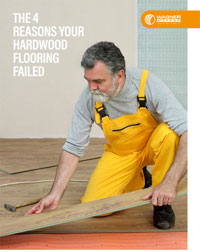
Free Download – 4 Reasons Your Hardwood Flooring Failed
Mold Problems
Before installing traditional bamboo floors, installers should look for grayish, streaky discoloration in the planks. It’s likely a fungus attacked the bamboo during the first few days after harvest.
Raw bamboo rots quickly, so it’s normally treated within two days of being cut. If the treatment is too late, the mold may still be visible in the finished floor even though it was killed. There are cases where the mold was still alive and spread in the floor after installation, even in a dry environment.
If mold is suspected in a traditional bamboo plank, installers would be wise to avoid using it. Mold is not likely in strand-woven bamboo because the glue and curing process should kill any spores.
Installation
Securing bamboo to the sub-floor requires special care. Nails or staples can easily damage the bamboo. Care also must be taken to keep the surface clean for glue-down installations. Glue that gets on the surface of the floor can be carefully removed, but it’s difficult.
Health Concerns
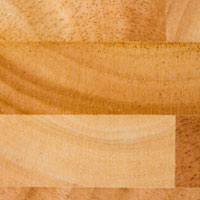 To create flooring strips, the bamboo must be glued together and compressed under extreme pressure. The Chinese use urea and formaldehyde in the gluing process, which is known to cause serious health problems in some humans.
To create flooring strips, the bamboo must be glued together and compressed under extreme pressure. The Chinese use urea and formaldehyde in the gluing process, which is known to cause serious health problems in some humans.
One installation risk is formaldehyde off-gassing. Installers who need to cut or sand bamboo flooring should wear a mask and clothing that protects the skin. Because formaldehyde is also a pungent-smelling gas, the stench alone can be unbearable.
Customers, too, can become ill from off-gassing–even long after installation.
In Conclusion
As an alternative to traditional hardwood flooring, bamboo is seeing increased interest recently among home and business owners. There are several good reasons for this, including its variety of styles and colors and lower cost.
However, there are drawbacks–and even risks for the home and business owner as well as the professional wood floor installer. These include high susceptibility to dents, scratches, and other damage if using inferior bamboo…extra precautions are required to handle possible mold and/or moisture issues during installation, and health concerns due to formaldehyde-based glues and finishes and their off-gassing.
Despite the drawbacks and risks, however, bamboo flooring can still make a great floor. The key to satisfaction: It should be properly made and installed by a reputable company with several years of experience importing and installing bamboo.
Troy Edwards is Technical Service Supervisor for Wagner Meters, Inc., where he oversees manufacturing, quality control and IT service for their electronic measurement products for the building and construction industry. Troy holds an AAS in Electronics Technology and has over 20 years’ experience in various electronic manufacturing and production positions.
Related Posts via Taxonomies
Last updated on May 4th, 2021



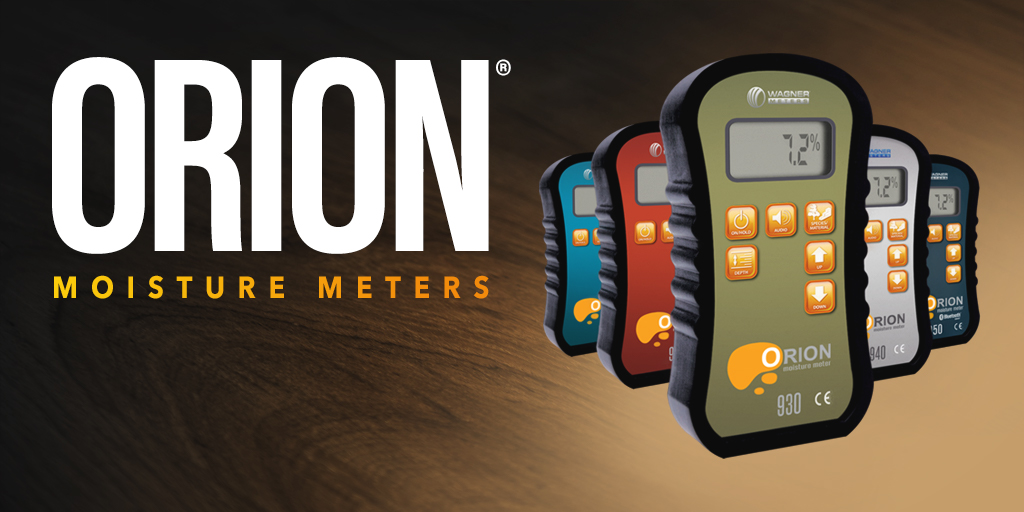

Getting separation on sides of bamboo planks which were clicked together. The gaps range from 1/4”to 3/4”. How can this be remedied? It is right down the middle of the floor. Why would this have happened after two years staying in place? Got at Floors d’ or… no one told us anything about shrinking. We’ve had wood floors throughout our house for thirty years and never gaps like this… what is the solution?
John,
I would refer you to NWFA.org. you can find independent inspectors and information on the installation portion.
Hey, Jason.
I was referring to relative humidity in the house; I have a temp / humidity display. I personally have no way to measure moisture in the bamboo.
This is not conclusive data, but FWIW, the flooring set on floor and decor’s air conditioned showroom racking for at least two months while we visited it before we decided to buy it; the dust on the pallet wrap and faded labeling indicated to me it had been there a while. And then it went from their store to my van, and into my house within an hour, where it sat acclimating for several months before I began installing it.
We did the installation in three phases, the last of which was over a year after the first phase and the unused flooring sat in the same room on the fireplace hearth the entire time. This particular brand/model of flooring claims that climatizing isn’t even necessary though recommended. So, no conclusive evidence of its internal moisture, just of it’s assumed stability.
I guess I‘d have to pay to have an inspector come out with a meter to do that. If we decide to pony up the money to have an inspector come out, and I can get some hygrometer readings from him, I’ll definitely update this post.
Thanks – Jeff
I have a similar issue to what’s described above, with ecoforest stranded bamboo flooring, purchased at floor and decor. We did allow the wood to acclimate for several months in our house before installing, with a consistent temp of 72-75 degrees and relative humidity of 40%. Our floating floor, installed, has more than a half an inch of expansion at the perimeter. I know this because we haven’t put the quarter round down yet, plenty of room visible. Nothing is anywhere near the walls, yet every board is cupped across the width, and heaving at the butt joints. I also have a stack of unused boards and cut ends I’ve kept in case I need to replace something. These are also warped, just sitting there. Not due to improper installation. I can lay one of these down on a flat surface and spin it easily. I think the reason is that the vast majority of the board thickness is PLASTIC which just warps anyway. I had another installer (35 Yrs experience) look at it and tell me this is a product failure. What recourse? Anyone been successful at getting Floor & Decor to accommodate?
Jeff:
Sorry for the issues. Curious, what were the moisture readings on the bamboo floor prior to installation and what meter and setting did you use to get those readings?
Would you recommend a best quality strand bamboo flooring manufacturing company?
Karalee:
Thanks for the question. We usually don’t get into specific manufacturer recommendations so I would just say do your research on the manufacturer’s and look how long they have been in the “bamboo game”. With increased popularity, more people have started offering products that may be of inferior quality. Good luck.
I had bamboo floor put in as part of small bathroom remodel three years ago. Now bathroom gives off weird smell. I only think of floor as many years ago the toilet leaked, and subfloor was rotting. This smell is similar but different. I had a remodel specialist come and he looked at toilet and said he did not think it was leaking. The bamboo shows no wrapping which would rule out moisture?? I do have some carpenter ants but have been poisoning them. That is only other thing I can think of? Ideas?
George:
Thanks for the question. Certain types of bamboo flooring have been known to off gas, so this MAY be the culprit. My best recommendation would be to have an air quality expert check things out.
Jason
we have 3 large bedrooms all will bamboo from lumber liquidators. was installed about 9 to 10 years ago. with in the last 6 months I am noticing a mildew small in all 3 rooms?
Help?
Sorry for the issues. I would recommend contacting a reputable wood flooring inspector to investigate the possible culprit(s) for your problem. Try starting at http://www.nwfa.org. Good luck.
My first attempt to install 517 SF MS XD Bamboo 1/2 x 5″ Str Nat Clic was highly succesful. I floated the floor over Roberts underlayment covering an area approximately 16 x 30. I retained the 3/4′ oak base moulding and kept a 1/2″ to 5/8″ expansion space at the perimeter. I consulted the local Lumber Liquidators retail store to seek guidance. No fasterners were used to secure the floor. It floats freely. I used cove moulding over the entire perimeter to cover any expansion gaps and attached to the base moulding, not the floor. This year and 2017 were two of the wettest years on record in the Pennsylvania forests. We opened all of the cartons to give the bamboo ample time to acclimate, and selected pieces from multiple cartons to minimize any variation in moisture content. I believe, based on my experience, that if one pays close attention to the details of proper installation one will enjoy a quality floor for years to come. 15 October 2018
Fritz:
Great perspective. It’s just a matter of proper acclimation and understanding proper installation. Unfortunately, I have heard multiple situations where it takes many months for the Bamboo to acclimate and many people don’t wait or don’t know.
Thanks,
Jason
Hey, Nice share!
Bamboo flooring is one of the fastest growing use of bamboo. This segment has been around for more than a decade or two but it has managed to reach great popularity and success all over the world.
Is it OK to glue 1/2″ x 5″ x 6′ click lock carbonized strand bamboo planks over top of a 22 year old factory-finished wood parquet floor? Is there a good adhesive that wouldn’t require either sanding the parquet to remove the old factory finish on the parquet (causing a lot of dust) or removing the parquet entirely (very difficult task)?
Please contact the National Wood Flooring Association in St. Louis, MO at 800-422-4556. They can give you the best guidance on this.
Hi.
I have installed strand bamboo flooring and it creaks/pops every time we walk on it. The supplier insists it is due to a cabinet on the floor preventing the expansion of the product, but we are pretty certain it is because it had zero time to acclimatise. and he rushed sanding the floor. He pulled it out of van and laid it within 30 mins of arrival. Is there evidence to suggest that the reason for the creaking is the flawed install process?
Brent
Brent:
Thanks for the comment. The acclimation process may a culprit, but there could be multiple other factors. If the floor is unacceptable, your best bet is to contact NWFA.org and have a certified inspector come out and do a formal report on the floor so you can plan a path for resolution. Good luck.
Jason
I purchased Eco Forest solid bamboo flooring for my entire new 1500 square ft house. I choose it because I was on a strict budget, and it was very affordable. My first feeling while looking at the planks was, I just like it but don’t love it. Until it was installed!! Myself, the builder, and other contractors were blown away at how beautiful this floor is. The planks have color differences which made in more beautiful. Everyone that sees it comments on how beautiful it looks. I am very happy with this floor!!
I was ready to have my click strand bamboo flooring put down a week ago. Carpenter said boards had ‘cupped’ & he would not install it. Thinking perhaps allowing boards to remain staked in area where it is to be installed would be better to acclimate them. There were seven cartons & I had to open all to carry boards up from garage, where cartons were set on a 1/2″ wood pad to keep off floor. Any recourse?
My bamboo click flooring from Floor & Decor Store has also problems. Big gaps between the boards shortly after installation and large spaces from walls. . I was told that it is my fault because relative humidity needs to be above 35% all the time. Nobody told me about it when I was buying that flooring. Also after talking to the local flooring installers I learned that it is virtually impossible to maintain this humidity level in the winter cold months in the Midwest area.
Had about 1000 square feet of stranded bamboo floor installed about six months ago. Purchased at Floors d’cor. Bad situation getting even worse as time goes on.Every board is “cupping and expanding”. What can be done to correct situation?
Ed:
The first step is trying to determine what the problem is. Too much moisture in the subfloor? Ambient conditions too dry? Bamboo MC% too high at install? This may require multiple opinions and potentially a flooring inspector. If you don’t determine the sources of the problem, even a complete floor replacement may end with the same results.